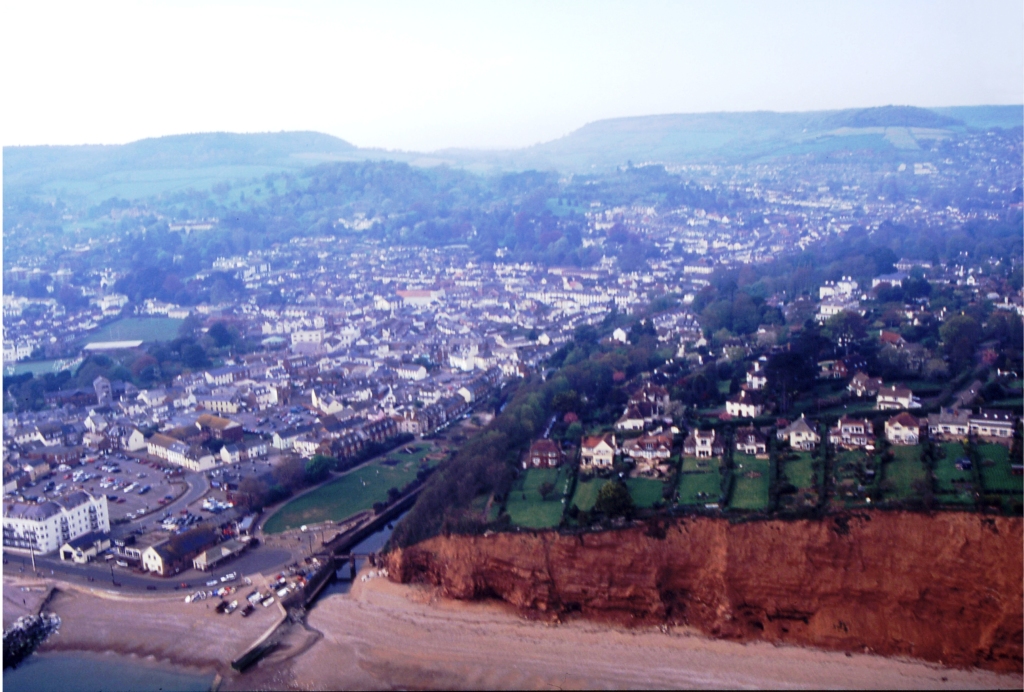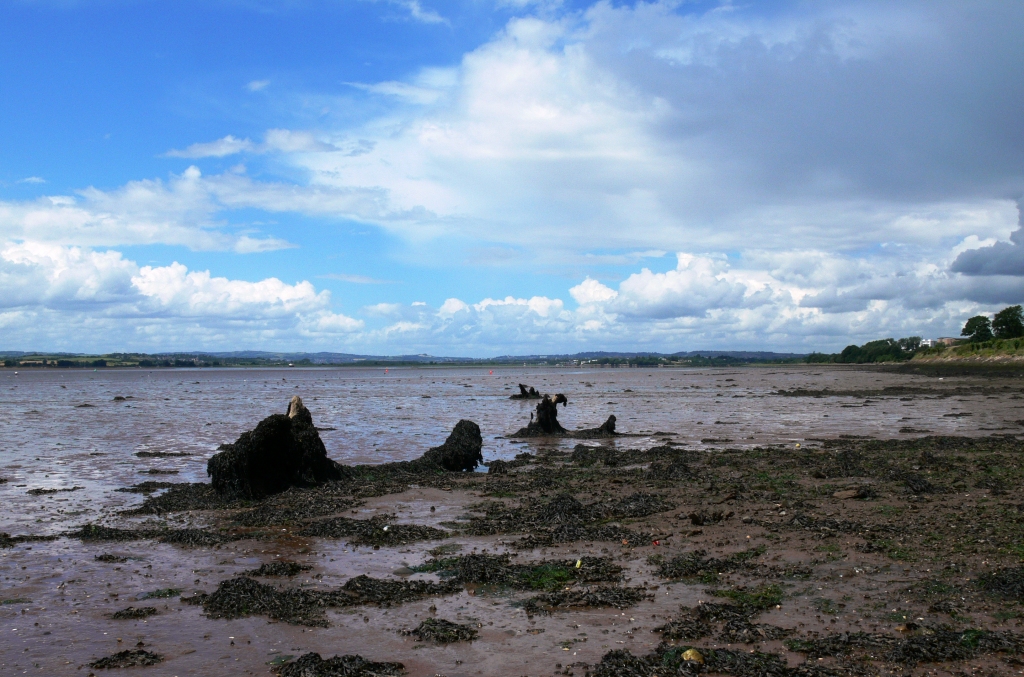C RWG
O
C RWG
O


Coastal erosion at Pennington Point, Sidmouth, Devon. The building of the Sidmouth esplanade wall in 1830 to protect buildings on top of the shingle beach, and groynes to prevent the longshore drift of the shingle, has resulted in an increase in erosion at the eastern end of the town. There, the former Pennington Point, a sandstone cliff adjacent to the outfall of the River Sid that extended 100 m seaward of the cliff line in pre-1830 paintings, is now a rapidly eroding embayment that threatens gardens and an important World Heritage site.
Submerged forest revealed at low tide in the Exe Estuary, Lympstone, Devon. The stumps of deciduous trees, radiocarbon dated as 3,300 to 4,000 years old, that were drowned by the post-glacial rise in sea level. These and similar submerged ‘fossil forests’ around the UK coastline provide a reminder that sea level is not static nor is it rising or falling at the same rate at all localities. Changes in sea-level and in the incidence of storms are two of the most important parameters that affect coastal erosion.
C RWG
O
C RWG
O